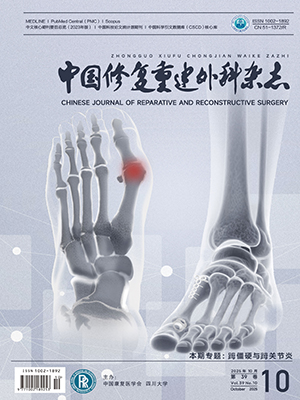Objective To review recent advances in the application of hair transplantation in wound healing and scar repair in special areas. Methods An extensive review of the literature on the application of hair transplantation in wound healing and scar repair in special areas was conducted, focusing on cellular functions, molecular mechanisms, and clinical applications. Results Hair transplantation has been shown to effectively promote wound healing and scar repair in special areas. The underlying mechanisms are complex, but current understanding emphasizes a strong association with hair follicle-associated stem cells (including epidermal stem cells, dermal papilla cells, dermal sheath cells, etc). Conclusion The application of hair transplantation in wound healing and scar repair in special areas remains in its early stages. Further investigation into its mechanisms of action is essential, and randomized controlled trials are needed to establish its efficacy.
Citation:
HUANG Zhewei, QIAN Xifei, XU Yanwen, Kaindi Samuel Tumaini, Pakaya Collins Daniel, ZHANG Jufang. Hair transplantation in wound healing and scar repair in special areas. Chinese Journal of Reparative and Reconstructive Surgery, 2025, 39(5): 647-654. doi: 10.7507/1002-1892.202502051
Copy
Copyright © the editorial department of Chinese Journal of Reparative and Reconstructive Surgery of West China Medical Publisher. All rights reserved
| 1. |
|
| 2. |
|
| 3. |
|
| 4. |
|
| 5. |
|
| 6. |
|
| 7. |
|
| 8. |
|
| 9. |
|
| 10. |
|
| 11. |
|
| 12. |
|
| 13. |
|
| 14. |
|
| 15. |
|
| 16. |
|
| 17. |
|
| 18. |
|
| 19. |
|
| 20. |
|
| 21. |
|
| 22. |
|
| 23. |
|
| 24. |
|
| 25. |
|
| 26. |
|
| 27. |
|
| 28. |
|
| 29. |
|
| 30. |
|
| 31. |
|
| 32. |
|
| 33. |
|
| 34. |
|
| 35. |
|
| 36. |
|
| 37. |
|
| 38. |
|
| 39. |
|
| 40. |
|
| 41. |
|
| 42. |
Herskovitz I, Hughes OB, Macquhae F, et al. Epidermal skin grafting. Int Wound J, 2016, 13 Suppl 3(Suppl 3): 52-56.
|
| 43. |
|
| 44. |
|
| 45. |
|
| 46. |
|
| 47. |
Alam M, Cooley J, Plotczyk M, et al. Distinct patterns of hair graft survival after transplantation into 2 nonhealing ulcers: Is location everything? Dermatol Surg, 2019, 45(4): 557-565.
|
| 48. |
|
| 49. |
|
| 50. |
|
| 51. |
|
| 52. |
|
| 53. |
|
| 54. |
|
| 55. |
|
| 56. |
|
| 57. |
|
| 58. |
|
| 59. |
|
| 60. |
|
| 61. |
|
| 62. |
|
| 63. |
|
| 64. |
|
| 65. |
|
| 66. |
Wang W, Meng T. Evaluation of surgical outcomes and patient-reported outcomes of eyebrow defect repair with “kite flap”. J Craniofac Surg, 2024.
|
| 67. |
|
| 68. |
|
| 69. |
|
| 70. |
|
| 71. |
|
| 72. |
|
| 73. |
|
- 1.
- 2.
- 3.
- 4.
- 5.
- 6.
- 7.
- 8.
- 9.
- 10.
- 11.
- 12.
- 13.
- 14.
- 15.
- 16.
- 17.
- 18.
- 19.
- 20.
- 21.
- 22.
- 23.
- 24.
- 25.
- 26.
- 27.
- 28.
- 29.
- 30.
- 31.
- 32.
- 33.
- 34.
- 35.
- 36.
- 37.
- 38.
- 39.
- 40.
- 41.
- 42. Herskovitz I, Hughes OB, Macquhae F, et al. Epidermal skin grafting. Int Wound J, 2016, 13 Suppl 3(Suppl 3): 52-56.
- 43.
- 44.
- 45.
- 46.
- 47. Alam M, Cooley J, Plotczyk M, et al. Distinct patterns of hair graft survival after transplantation into 2 nonhealing ulcers: Is location everything? Dermatol Surg, 2019, 45(4): 557-565.
- 48.
- 49.
- 50.
- 51.
- 52.
- 53.
- 54.
- 55.
- 56.
- 57.
- 58.
- 59.
- 60.
- 61.
- 62.
- 63.
- 64.
- 65.
- 66. Wang W, Meng T. Evaluation of surgical outcomes and patient-reported outcomes of eyebrow defect repair with “kite flap”. J Craniofac Surg, 2024.
- 67.
- 68.
- 69.
- 70.
- 71.
- 72.
- 73.




